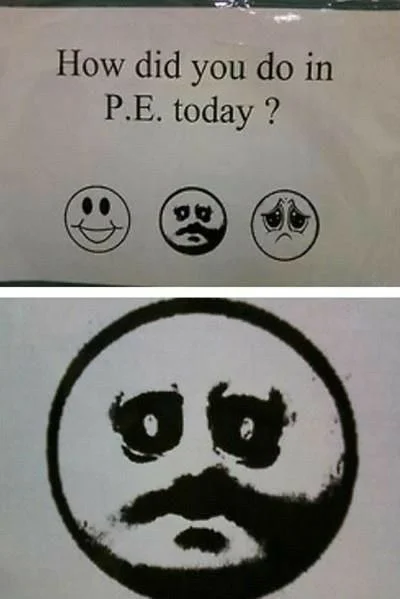The National Football League (NFL) is a realm of intense competition, adrenaline-pumping action, and the pursuit of athletic glory. However, beyond the dazzling touchdowns and bone-crushing tackles, there exists a shadowy side—a realm of cursed images that have become a source of intrigue and superstition among players, fans, and analysts alike. These haunting visuals seem to linger in the collective consciousness of the NFL, leaving an indelible mark on the league’s history. In this exploration, we delve into the eerie world of cursed NFL images, examining the stories behind them and the superstitions that surround these snapshots in time.

The Madden Curse:
No exploration of cursed NFL images is complete without mentioning the infamous Madden Curse. Dating back to 1999, the Madden NFL video game franchise has featured star players on its cover each year. Astonishingly, many of these cover athletes have gone on to experience misfortune or injuries during the season, leading to the belief in the Madden Curse.
One of the most well-known instances is the 2004 cover featuring Atlanta Falcons quarterback Michael Vick. After gracing the cover, Vick suffered a broken fibula in a preseason game, casting a shadow over his promising career. Subsequent cover athletes, including Donovan McNabb, Shaun Alexander, and Peyton Hillis, also faced setbacks after appearing on the game’s cover.
The Immaculate Reception:
The Immaculate Reception, an iconic moment in NFL history, is surrounded by an air of mystery and controversy. During the 1972 AFC Divisional Playoff game between the Pittsburgh Steelers and the Oakland Raiders, a pass intended for Steelers’ running back Frenchy Fuqua deflected off him and was caught by Franco Harris just inches above the turf.
The image of Harris cradling the ball remains etched in NFL lore, but the circumstances of the catch are shrouded in uncertainty. Many claim it was an illegal play due to the “double-touch” rule, while others believe it was divine intervention. The Immaculate Reception has become a symbol of both the extraordinary and the cursed, as the controversy surrounding it continues to fuel debates and speculation.
The Tuck Rule Game:
In the 2001 AFC Divisional Playoff game between the New England Patriots and the Oakland Raiders, a controversial call forever altered the course of NFL history. With less than two minutes remaining, Patriots quarterback Tom Brady dropped back to pass and was hit by Charles Woodson, causing him to fumble. The Raiders recovered the ball, seemingly sealing the victory.
However, the officials invoked the little-known “tuck rule,” determining that Brady’s arm was moving forward, making it an incomplete pass rather than a fumble. The Patriots retained possession, eventually tying the game and winning in overtime. The image of that contested moment still haunts Raiders fans, sparking debates over the fairness and legitimacy of the call.
The Calvin Johnson Rule:
Calvin Johnson’s spectacular touchdown catch in a 2010 game against the Chicago Bears seemed like a display of pure brilliance. However, the infamous “Calvin Johnson Rule” came into play, as officials controversially ruled that Johnson did not maintain possession of the ball throughout the entire process of the catch.
This ruling, which negated what appeared to be a clear touchdown, left fans and players baffled. The image of Johnson making the catch, only to see the touchdown overturned, remains a haunting reminder of the complex and often contentious nature of NFL officiating.
The Fail Mary:
In a 2012 Monday Night Football game between the Green Bay Packers and the Seattle Seahawks, a last-second Hail Mary pass became one of the most controversial plays in NFL history. Seahawks quarterback Russell Wilson launched a desperation pass into the end zone, resulting in a chaotic scrum between Packers and Seahawks players.
While it appeared that Packers safety M.D. Jennings had intercepted the pass, the officials controversially ruled it a touchdown for the Seahawks, citing simultaneous possession. The image of the conflicting grabs and the ensuing chaos left fans bewildered and sparked renewed discussions about the consistency and accuracy of officiating in the NFL.
The Bountygate Scandal:
The New Orleans Saints’ “Bountygate” scandal in 2012 revealed a dark underbelly within the NFL, involving a pay-for-performance program that rewarded players for injuring opponents. The scandal tarnished the reputation of the Saints and head coach Sean Payton, leading to suspensions, fines, and a tainted legacy.
Images of Saints players targeting opponents with the intention of causing harm cast a shadow over the league’s commitment to player safety. The Bountygate scandal serves as a cautionary tale, reminding the NFL of the consequences of compromising integrity and fair play.
Conclusion:
The NFL, with its rich history and moments of triumph and heartbreak, is also a breeding ground for cursed images that linger in the minds of fans and players alike. Whether it’s the Madden Curse haunting cover athletes, the controversies surrounding iconic plays like the Immaculate Reception and the Tuck Rule Game, or the stain of the Bountygate scandal, these images contribute to the mystique and folklore of the league.
As the NFL continues to evolve, these cursed images serve as cautionary tales, reminding us of the fragility of success, the complexities of officiating, and the importance of maintaining the integrity of the game. Despite the superstitions and controversies surrounding these images, they are an integral part of the NFL’s narrative, adding layers of intrigue to the sport we love.
